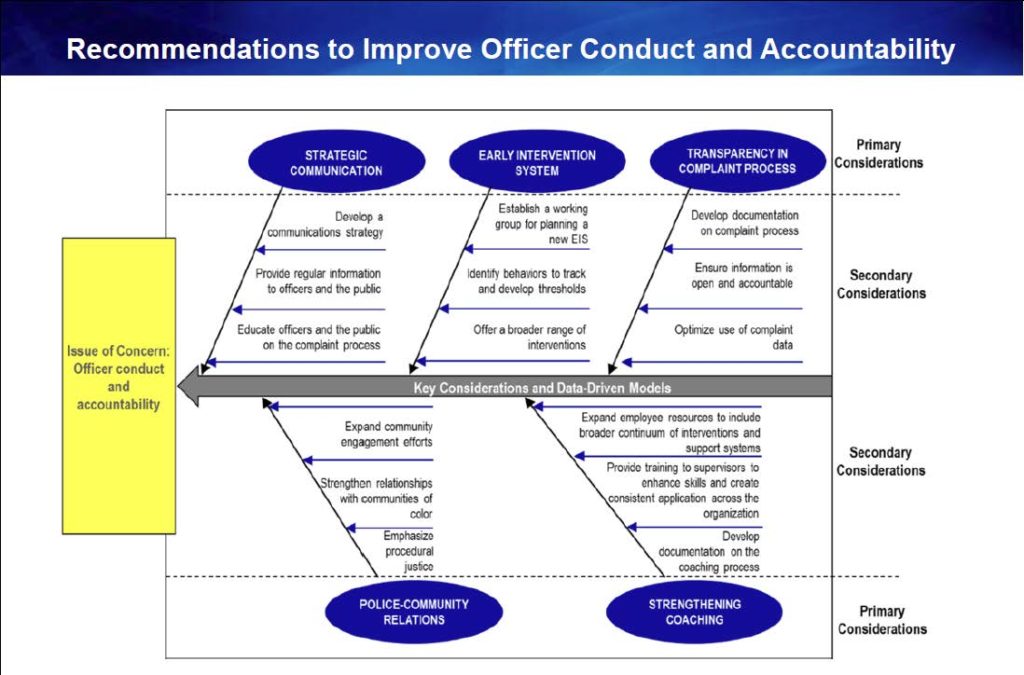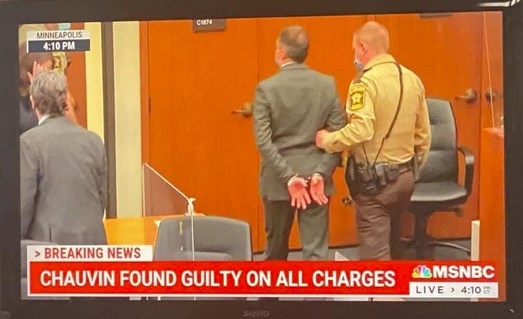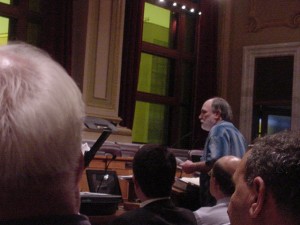Report: Investigation of Mpls and MPD
April 27th, 2022
Investigation into the City of Minneapolis and the Minneapolis Police Department: Findings from the Minnesota Department of Human Rights
It’s pretty damning, documents the systemic racism and maltreatment. Not news really, to anyone who’s paying attention. This should be hard for the City and MPD to ignore.
Chauvin GUILTY 3 of 3
April 20th, 2021

2015 DoJ Report on Mpls Police
July 5th, 2020

Back in 2015, after too many police shootings and killings, and too many reports of police misconduct, the Department of Justice was brought in to evaluate the Minneapolis Police Department. Police misconduct is again the subject of a lot of discussions, bytes, photos, videos, meetings, and this DoJ report from 5 years ago has come up frequently. Here it is so that it’s easily found:
What did they look at?

And the bottom line? The recommendations:

So that was 2015. What’s happened since then? Chief Arradondo was questioned about this at a press conference shortly after the murder of George Floyd. His response was essentially that yes, there has been some progress, some work on the recommendations, but not all have been implemented. When asked for specifics, he didn’t address the question. So the real bottom line is that there’s a lot of work to do and they’re behind and need to do some catch up. Some are saying that Arradondo hasn’t been chief for all that long, but it’s been three years since he was appointed, and he needs to get to it, particularly now.
I’d guess that these recommendations could be applicable to any police department. Which cities, which police departments, are going to do the work?
Meanwhile, in Minneapolis, the Charter Commission and City Council are ramming something through to be put on the ballot next election, and it’s my understanding that they did something similar in 2018 (nevermind they didn’t get it together to get the requisite vote on the U.S. Bank Stadium on the ballot, SHAME!). When I find the resolution and whatever else is before their Charter Commission and Council, I’ll post it.
Hiawatha Transmission Project MOES Recommendation
May 18th, 2011
Xcel Energy’s Hiawatha Transmission Project moves forward.
Recently, Comments and Reply Comments were due in this “informal” Certificate of Need proceeding. All the intervening parties in the routing docket have been sitting on their hands, or worse (I hope not, but why the silence?). So when only MOES filed “Comments” I filed Reply Comments, because theirs were SOOOOO… soooooo… well, read them yourself, they’re in INITIAL comments recommending that the Certificate of Need be approved, shouldn’t they at least make it look better by waiting to see what comes in before declaring that it should be approved?!?!?! … and the basis, well, it’s just absurd:
Here’s what I filed — I don’t have a dog in the fight, no client, no direct interest, but I cannot stand it when there’s NO response, NO filings, it’s just not right, and that’s when I get twitchy that somebody is pulling a fast one, and others did join in:
Johnson – Reply Comment Attachment
City of Minneapolis and Hennepin County Reply Comments
And then MOES has the last word, complaining that Xcel’s aren’t allowed under the PUC Rules of Practice in Minn. R. ch 7829!
A win! HERC denied permit by Mpls Planning Commission
June 23rd, 2009
WE WON A SMALL WIN — A START ON PREVENTION OF EXPANSION OF HENNEPIN COUNTY’S HERC BURNER!
Now and then, it sure helps to win, and Neighbors Against the Burner is on a roll here!
Here’s Alan Muller, testifying about specifics, noting that the areas of greatest concentration shown in the “ballpark EIS” were NOT in the ballpark, and the City has not addressed these impacts in any way:
In the meantime, here’s his letter to the Commission prior to the last meeting with a graph showing emissions:
Rep. Karen Clark came in to testify about her opposition to the project, citing the impacts of pollution on Hennepin County, armed with graphic graphics showing how bad the situation is already, and testified about specific impacts in her district, the Phillips neighborhood, particularly arsenic impacts, and other harmful pollutants.
Rep. Frank Hornstein also testified against the project, as did John Schatz, Leslie Davis, and the most bizarre HERC cheerleading twit, Mary deLaittre, who has actually written THIS (be sure to check the links.. “unique waste to energy facilities, oh pleeeeeze, pass the barf bag)– PARAGRAPH BELOW IS LINKED TO SITE:
- A HERCulean effort
- Because repetition is our friend, we feel the need to re-visit HERC (Hennepin Energy Recovery Center) and extol its virtues again. We sense that many have been missing the forest for the trees with respect to our pal HERC. HERC is a neighborhood amenity that provides an invaluable community service by disposing of 356,000 tons of garbage a year for Hennepin County. This garbage is converted into enough electricity to power 25,000 households, or 1/5 of all the residences in Minneapolis. Not only is it a 24/7/365 powerhouse, it is also a green building, to boot. Powerful as it is, HERC could do even more. HERC’s operators cite the plant’s unused capacity, and desire to contribute additional steam/water heating and cooling for the North Loop neighborhood. Like any building over 20 years old, it needs a bit of updating. A proposed makeover by Hennepin County and Covanta Energy, originally designed by students from the University of Minnesota, shows how the building and grounds could be transformed. So, as a city that touts itself as being green and wanting to be more sustainable, we should be celebrating HERC and supporting its efforts to become a better neighbor and community landmark. Visit our expanded collection of images featuring unique waste to energy facilities from around the world.
I’m speechless… too bizarre…
And alsoin the bizarre category, Asst. City Attorney wrote an opinion as to the City’s authority to adopt more stringent air emissions standards, a blatant attempt to quash their desire to act, to LAWFULLY act:
It was a hoot that he cited, offpoint, from Jimmy Jam Harris’ tax case in Hennepin County — when I looked that one up, right below it was Terry Lewis’ tax case! I can’t imagine why he’d cite these cases, as they didn’t make a useful argument for his view of statutory interpretation or lack thereof…
Anyway, I had a few minutes to blast off a reply:
From the article about it in the STrib, and note they’re clear about their authority:
Here’s the full article:





